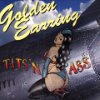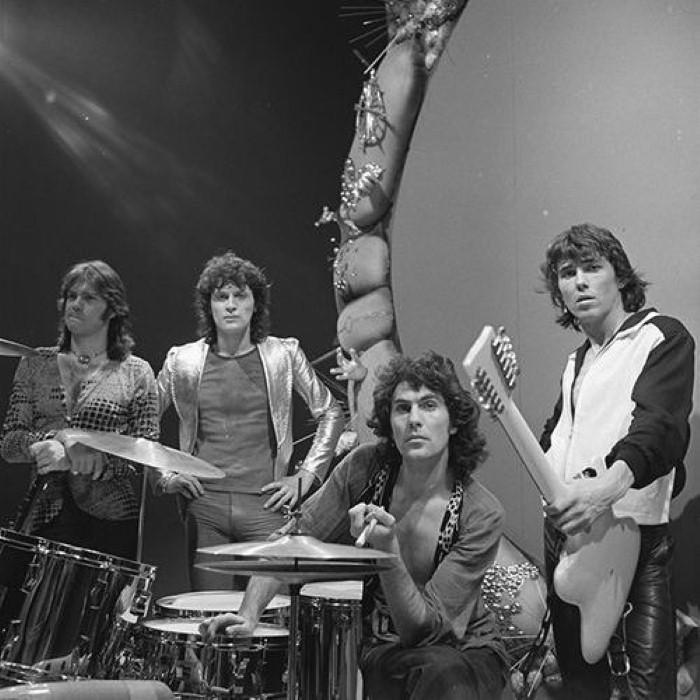Album Releases  view
view
 2012 - Tits 'n Ass
2012 - Tits 'n Ass
 2003 - Millbrook U.S.A.
2003 - Millbrook U.S.A.
 2001 - Eight Miles Back
2001 - Eight Miles Back
 1999 - Paradise in Distress
1999 - Paradise in Distress
 1997 - Naked II
1997 - Naked II
 1995 - Love Sweat
1995 - Love Sweat
 1994 - Face It
1994 - Face It
 1992 - The Naked Truth
1992 - The Naked Truth
 1991 - Bloody Buccaneers
1991 - Bloody Buccaneers
 1989 - Keeper of the Flame
1989 - Keeper of the Flame
 1986 - The Hole
1986 - The Hole
 1984 - N.E.W.S.
1984 - N.E.W.S.
 1982 - Cut
1982 - Cut
 1980 - Prisoner of the Night
1980 - Prisoner of the Night
 1979 - No Promises... No Debts
1979 - No Promises... No Debts
 1978 - Grab It for a Second
1978 - Grab It for a Second
 1976 - Contraband
1976 - Contraband
 1976 - To the Hilt
1976 - To the Hilt
 1975 - Switch
1975 - Switch
 1973 - Moontan
1973 - Moontan
 1972 - Together
1972 - Together
 1971 - Seven Tears
1971 - Seven Tears
 1970 - Golden Earring (Wall of Dolls)
1970 - Golden Earring (Wall of Dolls)
 1969 - Eight Miles High
1969 - Eight Miles High
 1969 - On the Double
1969 - On the Double
 1968 - Miracle Mirror
1968 - Miracle Mirror
 1967 - Winter Harvest
1967 - Winter Harvest
 1965 - Just Earrings
1965 - Just Earrings
Members
4 Male
Origin
 The Hague, The Netherlands
The Hague, The Netherlands
Genre
 Rock
Rock
Style
Rock/Pop
Mood
Gritty
Born
4 Male
Origin
Genre
Style
Rock/Pop
Mood
Gritty
Born
1961
Active 1961 to Present...
Cutout![]()
4 users
4 users
4 users
4 users
4 users
 Radar Love |
Artist Biography
Available in:
In 1961 bassist Rinus Gerritsen and guitarist/vocalist George Kooymans formed the Golden Earrings, in the Hague, Netherlands. After their original bandmates guitarist Hans Van Herwerden and drummer Fred Van Der Hilst were replaced by guitarist Peter De Ronde, drummer Jaap Eggermont, and vocalist Frans Krassenburg, the Golden Earrings had their first big hit, Please Go, in 1965. Not too long thereafter De Ronde left the band and Krassenburg was replaced by vocalist Barry Hay. In 1968 came the group's second big hit, Dong Dong Di Ki Di Ki Dong.
With these new developments the Golden Earrings began a more extensive touring program, performing in other European countries as well as the United States. Eggermont was replaced by drummer Sieb Warner, and the group's sound began to evolve in a harder, edgier direction. Eight Miles High won them international acclaim. Then Warner was replaced by drummer Cesar Zuiderwijk, and in 1972 Golden Earring toured as a support act for British rock band the Who. This led to their signing with Track Records.
In 1973, Golden Earring scored a colossal hit with Radar Love, from the Moontan album. However, although the song was hugely popular in the United States, the group were unable to ensure continuing success there. For one thing, the band line-up was still changing. Robert Jan Stips was keyboardist between 1974 and 1976, and between 1976 and 1979, Eelco Gelling played guitar alongside Kooymans.
By 1980, however, the group reverted to its original line-up of Hay, Kooymans, Gerritsen and Zuiderwijk. As a foursome they continued to prove themselves with their unique, raw and powerful style of rock 'n' roll and their reputation as a knock-out live act. Twilight Zone, from the Cut album of 1982, was another big hit in the U.S., as was When The Lady Smiles from N.E.W.S. a few years later. All four members have engaged in solo projects at one time or another through the band's career, and they continue, forty years later, to produce the moving and inventive rock 'n' roll their fans love so dearly.
After some thirty-plus albums, Golden Earring was asked to compose and record the Netherlands' official theme for the 2000 Olympics in Sydney. The song was recorded in the Earring's studio in Belgium and edited in Wisseloord Studios in Hilversum. In the latter location, full orchestral accompaniment was added. Arcade Records put the single out. It went gold in the Netherlands before it was even released. George Kooymans officially presented it on July 12th, 2000, at the introductory ceremonies for the Netherlands' Olympic team. At these ceremonies the song's title was revealed, having been kept a secret up until this day: "Yes! We're on Fire."
Wide Thumb
Clearart
Fanart



Banner

User Comments
 No comments yet..
No comments yet..
